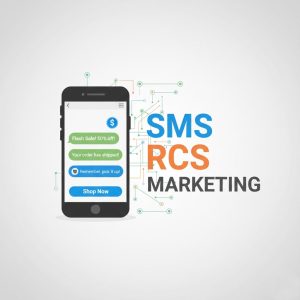What is Mobile Marketing Automation?

The world we live in has all but been subsumed by mobile devices. No matter if you’re shopping for groceries or calling your friend, sending reports or studying lessons, nowadays it’s hard to think of something that does not depend on a modern device.
For businesses, this presents too big to ignore of an opportunity to speak to clients right where their eyes normally stray form time Gambier into being still and concentrated-in pocket.
But in today’s always-on, mobile-first world how can you avoid making your marketing team burn out? The answer is promotion of mobile marketing.
Mobile marketing automation is changing the way companies connect with and engage audiences. You’ve heard this term, but you’re not quite sure what it means? This guide will help you understand so we can together learn what mobile marketing automation is, how it operates; what its main features are; and why people need smart into-efficient marketing campaigns more now than ever before.
What is Mobile Marketing Automation?
Mobile Marketing Automation (MMA) means employing software and tools to replace manual means so that marketing actions are optimized for the peculiar conditions of mobile channels like apps, SMS and mobile-capable browsers.
MMA can do more than just reduce your workload. It automates every customer interaction with high-quality standout content in a variety of ways and on multiple carriers and applications, largely advancing the sales process.
These systems analyze mobile user behavior and preference, and use the complimentary features of three kinds of marketing interface to provide custom messages that are perfectly suited as such timely bonuses for your company: send them as push notifications to your phone just before class begins; let them ride on in-app power only when it’s most needed; or let them enter an SMS message directly into the recipient ‘s cell phone while it is sleeping.
We are saying goodbye to sending empty messages and hello to
Why Does Mobile Marketing Automation Matter?
1. Meet Customers on Their Preferred Channels
With mobile devices driving over 59% of global website traffic (as of 2023), customers now expect seamless experiences on their phones. Mobile marketing automation ensures you can deliver engaging messages where your audience is already spending time, whether on apps, email, social media, or browsers.
2. Save Time, Scale Your Campaigns
Automation does the heavy lifting for repetitive tasks like sending follow-up messages, designing drip campaigns, and updating audience segments in real-time. By automating these, your team can focus on strategy and creativity rather than manual processes.
3. Drive Engagement and Personalization
Personalization isn’t optional anymore; 71% of consumers expect companies to deliver personalized interactions, according to McKinsey. MMA uses customer data to tailor every interaction, so your message feels more relevant and less like spam.
4. Outperform Competitors
While traditional marketing techniques still have their place, businesses leveraging automation are gaining a competitive edge. They’re faster to respond, smarter in targeting the right audience, and better at adapting to customer behavior in real time.
Key Features of Mobile Marketing Automation

Not all tools are the same, but most share these essential features that enable better campaign execution and measurable success.
1. Push Notifications
Push notifications are those short, clickable alerts you receive on your phone’s lock screen. With MMA, you can send personalized notifications based on user actions. For example:
- Noticed a customer hasn’t opened your app in two weeks? Send them a “We miss you!” discount.
- Did a user abandon their cart? Offer free shipping to motivate them to finish their purchase.
2. SMS Marketing Automation
Text messaging remains one of the most direct and personal communication methods, offering open rates as high as 98%. MMA enables you to send SMS campaigns that feel relevant, like appointment reminders, flash sale alerts, or mobile-exclusive deals.
3. Audience Segmentation
Audience segmentation means categorizing users into groups based on demographics, behavior, or interests. A great MMA platform automatically updates user segments as behavior changes, ensuring your messages always target the right people at the right time.
4. Customer Journey Mapping
One of MMA’s shining features is the ability to map customer journeys. These tools track user actions within apps, such as which buttons users click, how long they spend on a page, or where they drop off. This data allows marketers to refine the buyer’s path, making mobile experiences more enjoyable and intuitive.
5. Analytics and Reporting
To know if your campaigns are hitting the mark, real-time analytics and reporting features are a must. MMA tools track key performance indicators (KPIs), such as open rates, click-through rates, and conversion rates. Insights like these help you refine future campaigns for improved performance.
6. Integration Capabilities
Effective marketing automation doesn’t operate in isolation. The best MMA tools integrate seamlessly with your CRM, email marketing platforms, and e-commerce systems to ensure data flows smoothly and accurately for holistic campaigns.
Read our latest blog Location-Based Marketing Drives Revenue Growth and Customer Loyalty
How to Get Started with Mobile Marketing Automation
Getting started with mobile marketing automation doesn’t have to be overwhelming. Here’s a simple step-by-step guide for success.
Step 1. Define Your Objectives
What do you hope to achieve with MMA? Is it to increase app engagement, reduce cart abandonment rates, or boost SMS responses? Clear goals will guide how you approach everything from tool selection to campaign strategies.
Step 2. Choose the Right MMA Tool
Popular MMA software includes Braze, Lean Plum, and One Signal, but each offers unique features. Carefully evaluate your needs (such as integration with existing tools or budget constraints) before making your choice.
Step 3. Segment Your Audience
Not all users are the same, so treat them differently. Create segments based on data categories like age, location, purchase history, or app interactions.
Step 4. Design Targeted Campaigns
With your segments ready, design campaigns that are action-driven and concise. For example:
- For new users, set up a welcome message pop-up followed by a push notification.
- For loyal customers, use rewards-based systems, like exclusive raffle entries.
Step 5. Monitor, Test, Adjust
No MMA campaign is perfect on the first try. Use built-in analytics to monitor results, A/B test different offers, messages, or timings, and continually adjust strategies to maximize engagement.
Real-World Use Cases of Mobile Marketing Automation

Case Study 1: Reducing Cart Abandonment
A small e-commerce app used mobile marketing automation to send personalized push notifications when users abandoned their carts. Messages offering free shipping within 48 hours resulted in a 30% decrease in cart abandonment.
Case Study 2: Re-Engaging Users
An app for language learners sent targeted reminders to users who hadn’t practiced in over a week. Gamified incentives, like unlocking premium lessons for extra points, increased user retention by 45%.
Case Study 3: Rewards Programs
A coffee shop chain used SMS automation to inform customers about their rewards program. SMS open rates skyrocketed to 92%, helping the chain engage users who didn’t often check emails.
The Future of Mobile Marketing Automation
With AI and machine learning evolving rapidly, the future of mobile marketing automation is bright. Expect to see hyper-personalized campaigns that learn from each user’s behavior and preferences in real-time.
For businesses, adopting MMA represents a chance to drive growth like never before. By fueling their campaigns with insightful data and smart automation, companies can ensure every interaction is impactful and meaningful.
Making the Switch
If you’re ready to elevate your business and connect with customers on a personal level, now’s the time to explore mobile marketing automation. Remember, the key is to pair the right tools with a solid strategy.
Start small, experiment often, and always keep your audience’s needs at the heart of your efforts.





